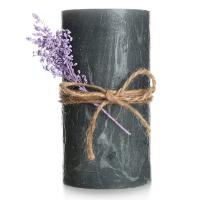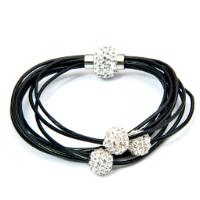
In some of our latest articles, we’ve discussed how Lac du Bonnet businesses can improve their online presence. We’ve discussed building a website, setting up your Google My Business Listing, and even creating an Email Newsletter to increase your sales.
A critical component in all these marketing tools and others that we’d like to focus on today is how you can use product images to increase your sales and showcase what your Lac du Bonnet business has to offer.
We all know the expression, “a picture is worth a thousand words,” we often use it to ascribe beauty or memories to photographs we see. Interestingly enough, as we know it today, the phrase was plagiarized and para-phased by Journalists and Ad Men as far back as 1911. Even then, 110 years ago, marketers knew the significance of using photography to sell products.
While the necessity of using product photos hasn’t changed in the past 100-plus years, the technology and ease of producing product photography sure have. Gone are the days of needing professional cameras and lighting or the expense of hiring professionals to get the job done for you. Now, all you need is your smartphone, your product, and a few simple items you can probably find lying around the house.
The Gear You Need
Honestly, the absolute bare minimum is your smartphone, a background (which is traditionally white) and some natural light.
1. Your Smartphone – pretty much any smartphone will do. The cameras these days make great DSLR (professional cameras) alternatives.
Phone Tip
Check that your image settings are set to the highest resolution option for your camera, as many of us will have lower resolution settings in place to save space on the MicroSD or internal memory of our phones. Without getting too techy, shooting at a higher resolution will capture more digital information when you take your shots. Higher-resolution photos are things that you can use on social media and in print.
2. White Static Backdrops are key in product photography and play a few different roles in capturing the perfect shots. First and foremost, white backdrops are traditionally used because they allow the focus to remain on your product, which is exactly what you want. White backdrops also allow for a clean and consistent look between all your product shots. Another reason to shoot on a white backdrop is that it will help with the lighting. A white backdrop will help reflect natural light onto the product, creating an evenly lit photo.
Background Tip
White backdrops can be created from poster board, printer paper, or a wrinkle-free sheet. How you suspend your background doesn’t matter. Use tape, teacher’s pet, push pins, or whatever else you need to create a seamless white backdrop behind your product.
3. Lighting – is the most important factor when taking product shots. You want your product to be well-lit, and you want to avoid dark, heavy shadows. Avoid using the camera’s flash, as this could create glare on certain products, overexpose your shots, and produce harsh shadows. Using natural light by shooting near a window is a great way to light your product.
Lighting Tip
Start with your product set up close to the window at a 90-degree angle to the left or right of your setup. If the light is too bright, you can use a sheer white curtain to diffuse (soften) the light coming through the window. You can also change the angle of your product and pull your overall setup away from the window. You will know that you have the lighting right when your product looks great and only soft shadows fall on the background.
You can manipulate the light reflecting onto your product by using reflectors. Foam poster boards work great to bounce and intensify the light from the window to fill (lighten) the shadows. Test different angles and distances to achieve the right balance of shadow and lighting on your product.
Optional Gear
Mini Tripods – are a great addition to the tools list, but not necessary. Using a tripod helps reduce camera shake and standardizes photo angles and style, which is really useful when shooting your entire product line.
Product LightBox or Light Tent is a contraption with translucent sides that diffuses light from multiple sources. This allows for even, nearly shadow-less lighting against a simple, solid background. Kits generally come with two lighting sources, which you would then place directly opposite each other on the outside of the box or tent to illuminate your product.
It’s all About the Angles
 It doesn’t matter if you are shooting a cheeseburger and fries, an article of clothing, or cosmetics; you’ll want to shoot from different angles and share product shots that display your product in the most flattering way. This can often mean sharing more than one photo, which your customers will love.
It doesn’t matter if you are shooting a cheeseburger and fries, an article of clothing, or cosmetics; you’ll want to shoot from different angles and share product shots that display your product in the most flattering way. This can often mean sharing more than one photo, which your customers will love.
There are four camera angles you should explore while capturing your products:
- Eye-Level – this view shows the product as you’d see it when looking at it straight on.
- High Angle – this view shows the product as you’d see it if you looked down at it from an angle.
- Low Angle – this view shows the product as you’d see it if you looked up at it from the floor.
- Bird’s Eye – this view shows the product as you’d see it if you were standing over it.
Depending on your product, you may also want to consider including close-up shots that will allow you to capture features that showcase the product’s quality. Get close to capture things like print detail, fabric, texture, or other specific elements of your product that your customers will want to inspect in more detail.
It’s Time to Start Shooting
Get your products out, and start shooting. Test different angles, play around with the lighting by using a reflector, take close-ups and full product shots, and just start shooting; you’ll see how quickly it is to get the hang of it.
Phone Camera Tip
Avoid using the zoom feature on the camera, as this will reduce the image quality. Instead, move the camera closer to the product to get the desired shot. Oh, and avoid using the selfie camera – it isn’t as good as the camera on the back of your phone.
Every Photographers’ Secret is the Editing Process
 Every professional digital photographer will tell you how important it is to edit your photos before releasing them. It’s just part of the process. When editing product shots, you want to focus on simple edits that enhance your product’s natural look and feel; you want to avoid overediting to the point where your photo becomes a lie.
Every professional digital photographer will tell you how important it is to edit your photos before releasing them. It’s just part of the process. When editing product shots, you want to focus on simple edits that enhance your product’s natural look and feel; you want to avoid overediting to the point where your photo becomes a lie.
You don’t need expensive software for editing anymore either. There are tons of great apps out there that will help you through this next part.
The few basic edits you will want to explore and become familiar with are:
Exposure Settings – allow you to change, to a certain degree, how light or dark your image is. This only goes so far; if you don’t get the lighting right while taking the product photo, it is difficult to correct it in the editing process. If you just need to brighten up or darken your image a couple of degrees, the exposure settings will do the trick.
Contrast Settings – allow you to alter the difference between the light and dark parts of your photo. High-contrast photos will have bright highlights, dark shadows and vibrant colours, while low-contrast images depict less apparent distinctions between them. Use this feature sparing to balance out the colours in your product shot.
Highlight Settings – let you adjust the brightest areas in your photo so you can increase them a notch or reduce them slightly. Again, this is an edit where a little goes a long way, and if you over-do-it, you’ll want to go back to your lighting setup to grab the shot all over again.
Shadow Settings – let you adjust the darkest areas in your photo so you can increase or soften the shadow detail. Just like the highlight settings, be careful not to overdo it. Editing programs will not make up for poorly lit photos.
White Balance Settings – are used to counteract hues inherent to the conditions you are shooting in, for example, the orange/yellow hue of artificial lighting or the blue hue of cold light, which is why snow appears blue in so many outdoor shots. The white balance setting can balance out the white so that the photo appears neutral in colour.
Sharpness Settings – allow you to control the photo’s overall clarity in terms of both focus and contrast. When an image is sharp, your product appears clear and lifelike, with detail, contrast and texture rendered in detail. When adjusting the photo’s sharpness, be careful to pay attention to any minor imperfections in the product, which can become intensified if you over-sharpen your image.
Editing Tip
If you are editing a series of photos, all shot simultaneously, with the same lighting conditions, you can speed up the editing process by saving your first edit as a preset that can be applied to the other photos you are editing. While this will save you time, you should check each image to see if there are any additional tweaks to make.
A Few Editing Apps that are Completely Awesome to Use
These two apps are amazingly easy to use, letting you do almost anything you dream of to your photos. I use these apps and their desktop counterparts almost exclusively for my photography and design needs.
1. Adobe Lightroom
Adobe Lightroom has to be one of the best editing apps I’ve ever used. It features easy-to-use tools like sliders and presents to create photos that look exactly how you want them.
2. Adobe Photoshop Express
Adobe Photoshop has long been the go-to editing program for professional photographers. The Adobe Photoshop Express App lets you do everything Photoshop can do right on your smartphone. You can even shoot your product photos right inside the app then easily adjust the settings to create amazing photos of your products.


